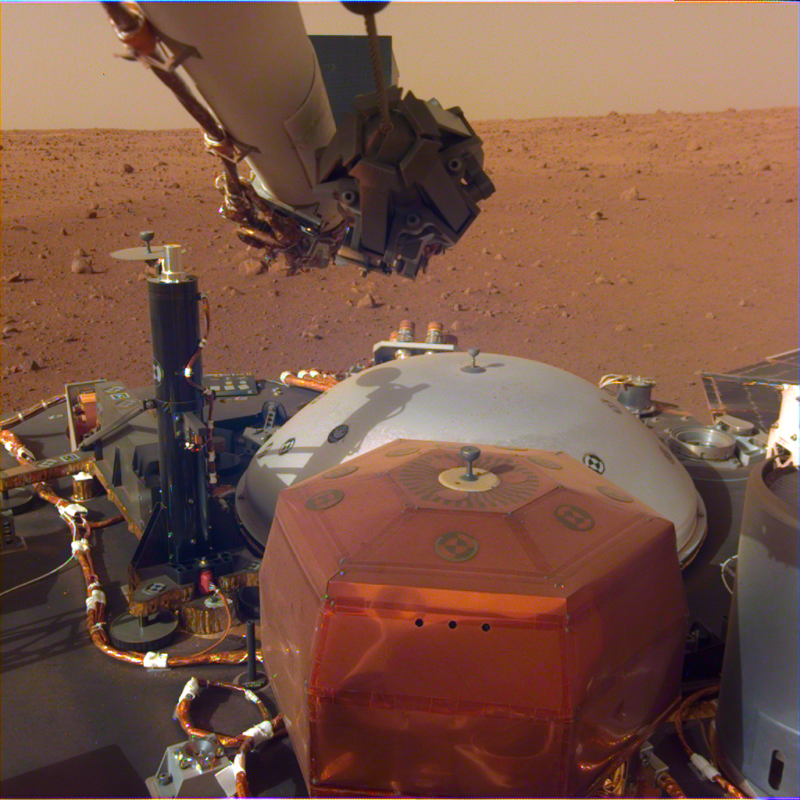Mars keeps spinning faster every year, NASA InSight data says

Enlarge / A self portrait of InSight's hardware on the red planet. (credit: NASA/JPL-Caltech)
To say Mars is a bizarre planet might be something of an understatement. It has nearly no atmosphere, has an unstable liquid metal core that causes it to wobble on its axis constantly, and as a frozen desert, is an oxymoron in itself. As if Mars wasn't strange enough, data from NASA's InSight Lander (RIP) has now revealed that the red planet is spinning faster and faster every year.
The increasing spin went unknown until a research team found evidence of acceleration through InSight's RISE (Rotation and Interior Structure Experiment) instrument. That same team, led by radio scientist Sebastien Le Maistre of the Royal Observatory of Belgium, who is also the principal investigator of RISE, had previously found that the core of Mars is most likely a glob of molten metal. Looking further into RISE data from InSight's first 900 days on Mars, they saw that the planet's spin was accelerating by a fraction of a millisecond per (Earth) year, or about 0.76 milliseconds. Martian days are gradually growing shorter. But why?
What lies beneath-or aboveRISE's main objective was to see how much Mars wobbled as its orbit was pushed and pulled by the gravity of the Sun. This would determine whether the core was more likely to be solid or liquid. However, RISE also had another task, which was measuring the length of a Martian day. Days on Mars, known as sols, are about a half-hour longer than Earth days at 24 hours and 37 minutes. RISE measured both the rotation rate and wobbling of Mars with reflected radio waves. When it received a radio signal from NASA's Deep Space Network (DSN), it would reflect those waves right back at Earth. The difference between the frequency of the signal sent out by the DSN and the signal that bounced back to Earth told the InSight team how the lander was moving along with Mars.